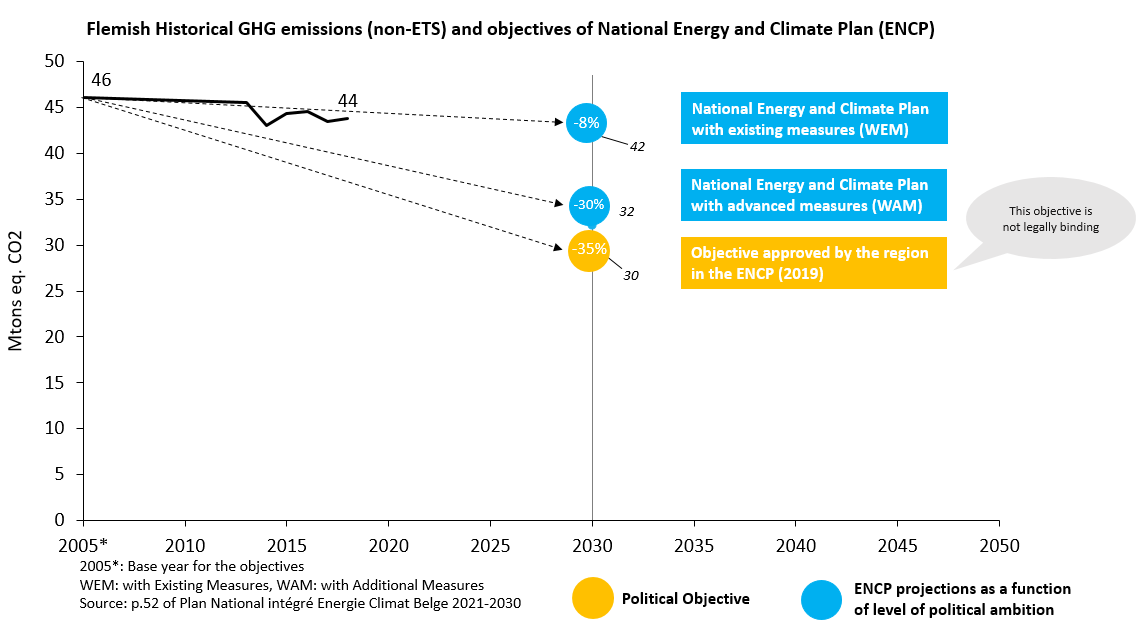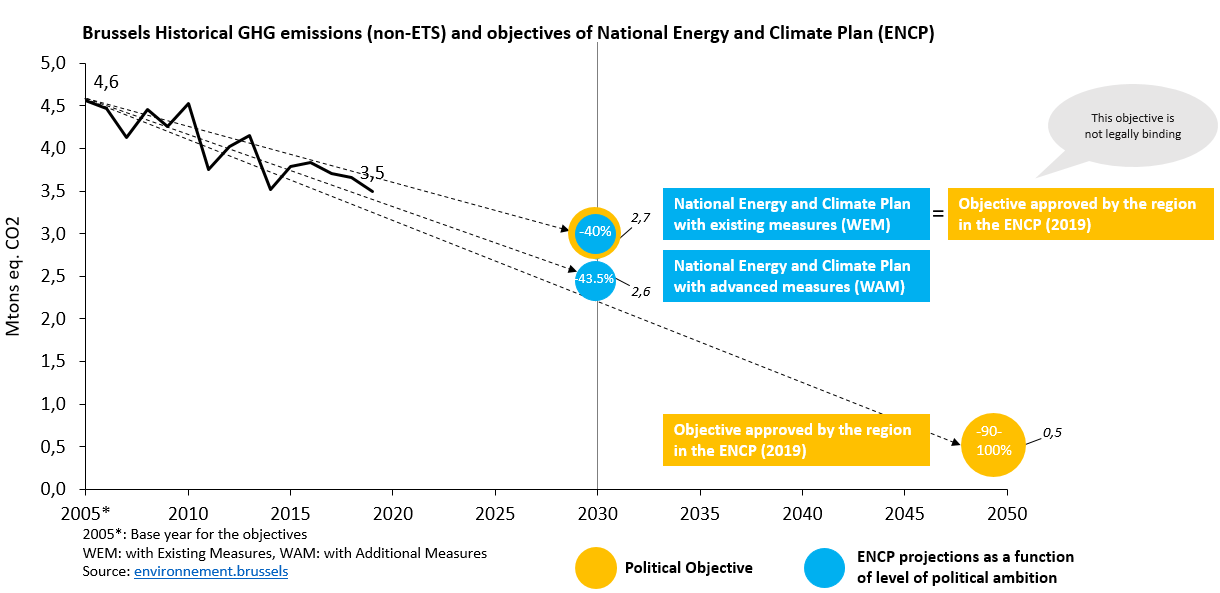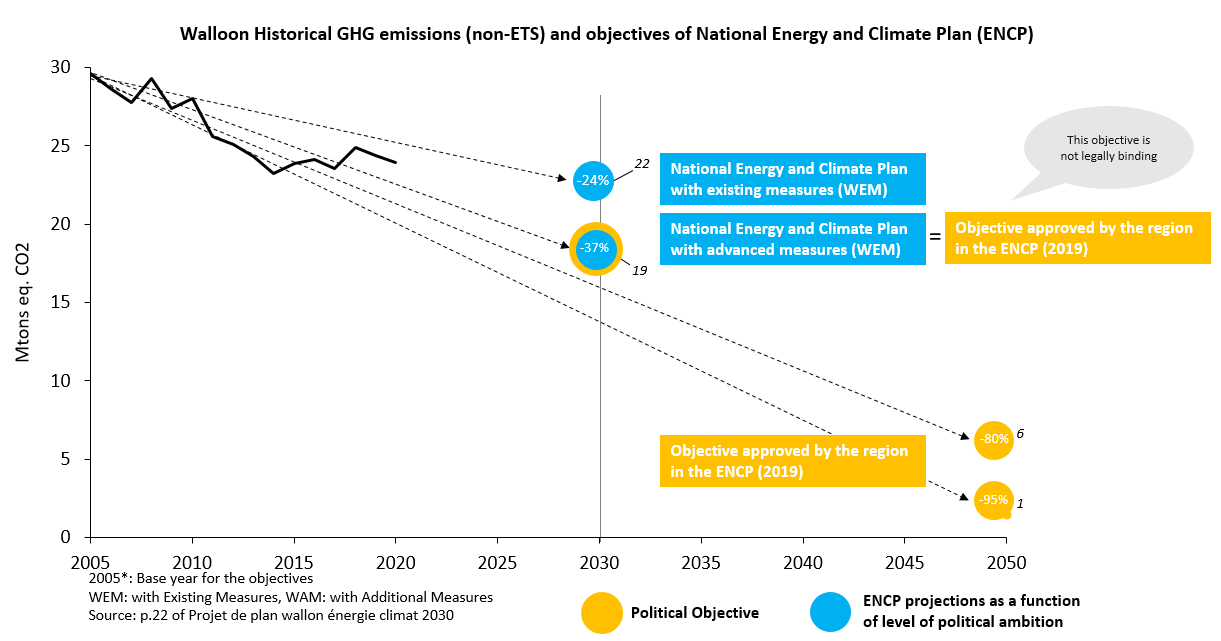-
2019 | National Energy and Climate Plan

Belgium
As a member state of Europe, Belgium must also comply with the "2030 Climate & Energy Framework" that aims to meet the Paris Agreement, and is thus obliged to draft a National Energy and Climate Plan.
In order to define the emission reduction targets as well as decide how to reach them, Belgium drafted a National Energy and Climate Plan 2021-2030. -
2019 | National Energy and Climate Plan

Regions
In this plan, the regions show how they will collectively meet the target of 35% by 2030 compared to the reference year 2005.
The plan includes the reduction targets per region by 2030 compared to base year 2005.



Targets
Flanders
Greenhouse Gas Emissions
-35%By 2030 compared to the base year 2005
Brussels-Capital Region
Greenhouse Gas Emissions
-40%By 2030 compared to the base year 2005Wallonia
Greenhouse Gas Emissions
-37.5%By 2030 compared to the base year 2005 -
2019 |National Energy and Climate Plan

good to know
The National Energy and Climate Plan (NECP) was approved under a government in 'Current Affairs', which could question the democratic legitimacy of the plan.
The plan was judged by the European Union to be inconsistent and inadequate. Also, the calculation of CO2-equivalent emissions showed that the plan was insufficient to reach the targets. Where a 35% reduction was expected, only 32.5% was budgeted.
Despite a common monitoring methodology, as established in the National Energy and Climate Plan, the regions communicate differently on the monitoring of their regional emissions. Hence, the National Energy and Climate Plan is a heterogenous collection of measurements.
It is important to note that the PNEC is not legally binding.